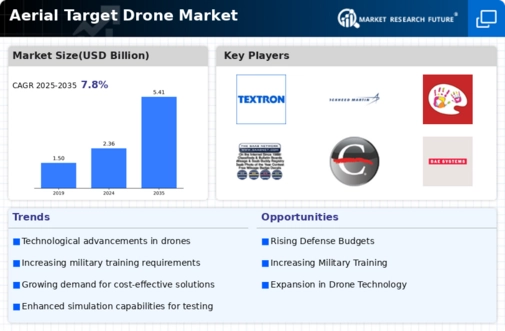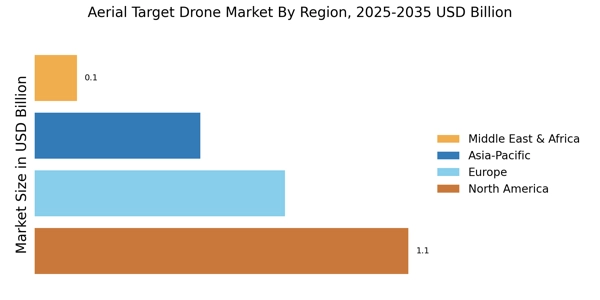Increased Defense Budgets
The Aerial Target Drone Market is benefiting from increased defense budgets across various nations. Governments are recognizing the importance of advanced training systems to maintain military readiness and effectiveness. As a result, defense spending is on the rise, with many countries allocating substantial funds for the procurement of aerial target drones. Reports indicate that defense budgets in regions such as Asia-Pacific and Europe are expected to grow by approximately 5% annually over the next few years. This financial commitment is likely to bolster the aerial target drone market, facilitating the development and deployment of cutting-edge training solutions.
Expansion into Non-Military Applications
The Aerial Target Drone Market is not limited to military applications; it is also expanding into various non-military sectors. Industries such as law enforcement, search and rescue, and even entertainment are beginning to adopt aerial target drones for training and simulation purposes. For example, law enforcement agencies are utilizing drones to simulate high-speed pursuits and tactical scenarios, enhancing their operational readiness. This diversification is expected to contribute to market growth, with non-military applications projected to represent a significant portion of the market by 2027. The versatility of aerial target drones is likely to open new avenues for revenue generation and innovation.
Technological Advancements in Drone Design
The Aerial Target Drone Market is experiencing a surge in technological advancements that enhance the performance and capabilities of drones. Innovations in materials, propulsion systems, and avionics are leading to the development of more efficient and versatile aerial targets. For instance, the integration of artificial intelligence and machine learning algorithms allows for improved target tracking and maneuverability. This evolution not only increases the effectiveness of training exercises but also reduces operational costs. As a result, military organizations are increasingly investing in advanced aerial target drones, with the market projected to reach USD 1.5 billion by 2026. Such advancements are likely to redefine training methodologies and operational strategies in defense sectors.
Growing Demand for Realistic Training Scenarios
The Aerial Target Drone Market is witnessing a growing demand for realistic training scenarios among military and defense organizations. As warfare becomes increasingly complex, the need for effective training solutions that simulate real-world conditions is paramount. Aerial target drones provide a cost-effective means to create dynamic training environments, allowing military personnel to practice engagement tactics against moving targets. This trend is reflected in the increasing procurement of drones for training purposes, with estimates suggesting that the training segment could account for over 60% of the market share by 2025. Consequently, the emphasis on realistic training is driving innovation and investment in the aerial target drone sector.
Rising Focus on Cost-Effective Training Solutions
The Aerial Target Drone Market is increasingly characterized by a rising focus on cost-effective training solutions. Military organizations are under pressure to optimize their training expenditures while ensuring high levels of preparedness. Aerial target drones offer a viable solution, as they can be deployed for multiple training exercises at a fraction of the cost of traditional live targets. This cost efficiency is particularly appealing in an era of budget constraints. Market analysis suggests that the demand for cost-effective training solutions will drive a compound annual growth rate of around 7% in the aerial target drone sector over the next five years. This trend underscores the importance of affordability in shaping the future of military training.


















Leave a Comment